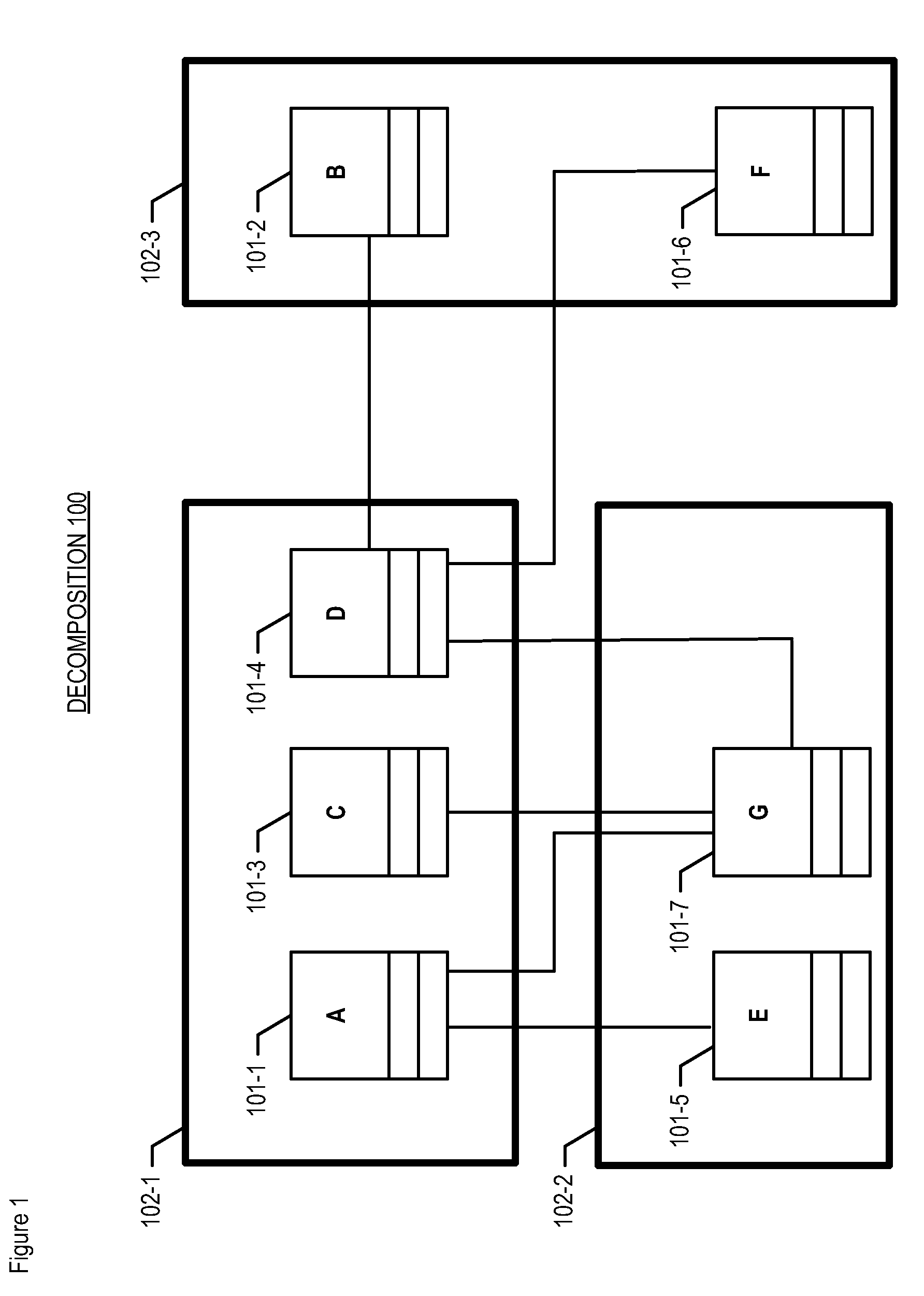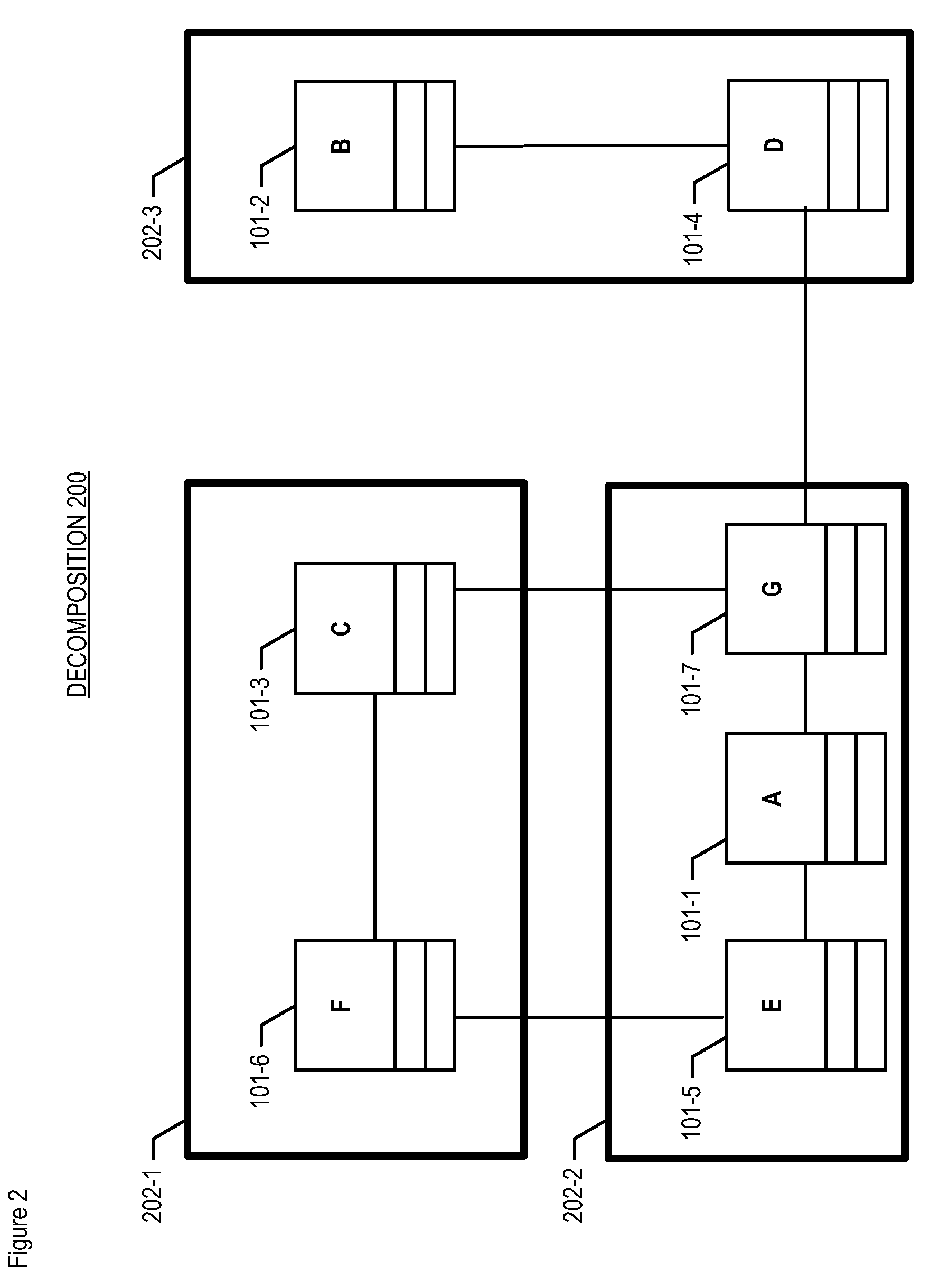System decomposition via evolutionary programming
a technology of evolutionary programming and system decomposition, applied in the field of optimization, can solve the problems of increasing the complexity of determining the quality of candidate decompositions, no known polynomial-time solutions,
- Summary
- Abstract
- Description
- Claims
- Application Information
AI Technical Summary
Benefits of technology
Problems solved by technology
Method used
Image
Examples
Embodiment Construction
[0019]FIG. 3 depicts the salient elements of data-processing system 300, in accordance with the illustrative embodiment of the present invention. As shown in FIG. 3, data-processing system 300 comprises memory 301 and processor 302, interconnected as shown.
[0020]Memory 301 is capable of storing data and executable instructions, as is well-known in the art, and might be any combination of random-access memory (RAM), flash memory, disk drive memory, etc. It will be clear to those skilled in the art, after reading this specification, how to make and use memory 301.
[0021]Processor 302 is a general-purpose processor that is capable of executing instructions stored in memory 301, of reading data from and writing data into memory 301, and of executing the tasks of the methods described below and with respect to FIGS. 4 and 6. As will be appreciated by those skilled in the art, in some alternative embodiments of the present invention, processor 302 might instead be a special-purpose process...
PUM
 Login to View More
Login to View More Abstract
Description
Claims
Application Information
 Login to View More
Login to View More - R&D
- Intellectual Property
- Life Sciences
- Materials
- Tech Scout
- Unparalleled Data Quality
- Higher Quality Content
- 60% Fewer Hallucinations
Browse by: Latest US Patents, China's latest patents, Technical Efficacy Thesaurus, Application Domain, Technology Topic, Popular Technical Reports.
© 2025 PatSnap. All rights reserved.Legal|Privacy policy|Modern Slavery Act Transparency Statement|Sitemap|About US| Contact US: help@patsnap.com



